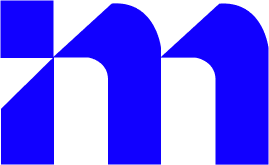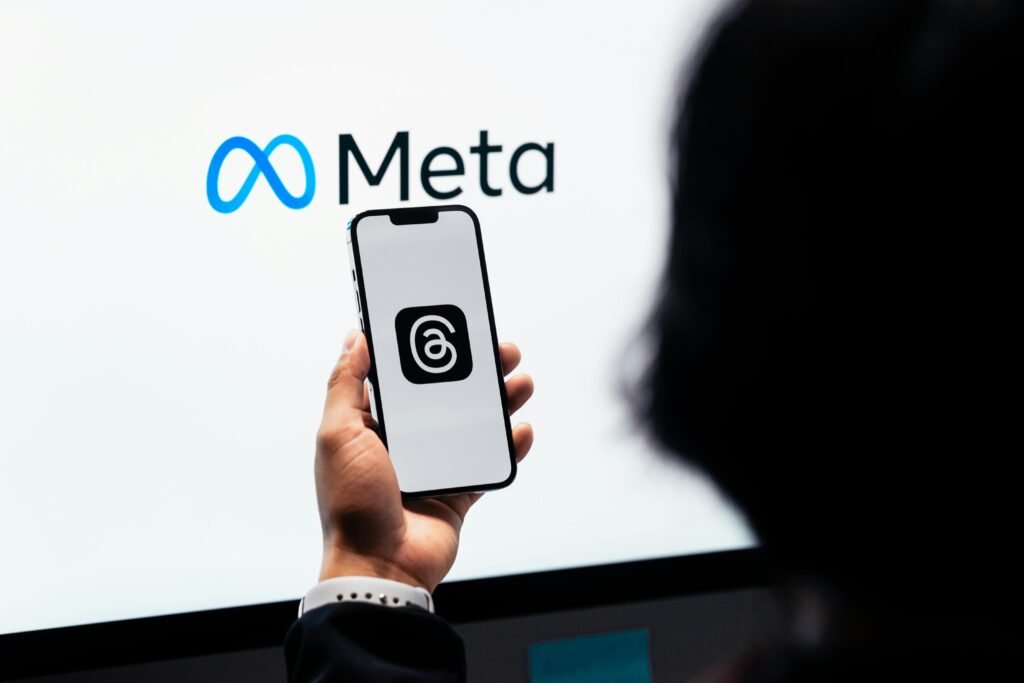The majority of marketers who run successful Meta business Ads manager campaigns fail due to insufficient budgeting, not poor creatives or subpar products. Even with the greatest offer and the most precise targeting, a campaign might still lose money if the budget isn’t set up correctly. The issue? Too many advertisers view budgeting as a hunch rather than a key component of strategy.
They either overinvest in efforts that haven’t gained traction or underinvest in crucial test periods. In order to help you spend effectively, test systematically, and scale profitably, we’re laying down the ultimate budgeting formula in this piece.
Whether you’re spending $1,000 or $100,000 a month, you’ll have a clear plan by the end of how to organize your advertising budgets for steady growth. Let’s break it down step by step, starting with understanding the ecosystem you’re budgeting for.
1. Understanding the Meta Business Ads Manager
Facebook, Instagram, Messenger, and the Audience Network are just a few of the potent platforms that make up the Meta Ads ecosystem. Advertisers may launch campaigns that reach billions of consumers across a variety of media, including Stories, Reels, Feeds, and even third-party apps, thanks to their combined infrastructure.
- Meta’s algorithm begins by placing your ads in a Learning Phase, where it experiments with different audience segments to determine who is most likely to engage. This stage is data-intensive and requires consistent input.
- During the Learning Phase, budget and targeting stability are essential. Frequent changes can reset learning, slowing progress and wasting budget.
- Once the Learning Phase is complete, your campaign enters Optimized Delivery, where Meta uses your selected bid strategy (such as Lowest Cost or Highest ROAS) to prioritize top-performing audiences and placements for better results.
Budgeting is crucial at this point because if it is too modest, the campaign might never get past the learning phase; if it is too inconsistent, performance statistics will be reset.
2. Why Budgeting is the Backbone of Campaign Scalability.
Your budget is the fuel that drives Meta’s optimization engine; it’s more than just a sum of money. Your campaign runs the risk of underperforming or scaling ineffectively if the proper allocation isn’t made at the right moment.
The way your budget works with your targeting, creative, and bidding strategy affects all of the important ad metrics, including CPM (Cost Per 1,000 Impressions), CPC (Cost Per Click), and CTR (Click-Through Rate).
For instance, because the algorithm lacks the room to identify the most effective impressions, low budgets frequently result in high CPMs. On the other hand, spending a lot of money on unproven creatives can increase your CPCs and decrease your ROAS.
Choosing between lifetime and daily budgets is one of the most crucial choices. While lifetime budgets give the algorithm more flexibility in spending based on results, daily budgets offer consistent pacing and facilitate incremental testing. Both are useful, but neither can save a poorly organized campaign.
Possibly the most frequent (and expensive) error? either overfunding an unproven campaign and wasting money before it gains credibility, or underfunding the testing phase, which results in data that is not definitive.
3. The 3-Phase Budgeting Formula for Scalable Meta Ads
To scale Meta business Ads manager effectively while maintaining control over spend, it’s helpful to break your budget into three key phases. This approach is known as the TTS Formula, which stands for:
- T = Test Budget
- Tn = Test-Nurture Budget
- S = Scale Budget
Each phase has a specific purpose and recommended allocation:
Test Phase (T)
This is the stage of discovery. This is where you should set aside roughly 10–15% of your monthly advertising budget. The goal is to collect actionable data, not to increase sales right away. Budgets ought to be sufficiently large to effectively complete Meta’s learning phase without running the risk of incurring huge waste.
Test-Nurture Phase (Tn)
Spend 20–25% of your budget on fostering those winners after you’ve determined what works. This includes enhancing ROAS (Return on Ad Spend), tightening targeting, experimenting with calls to action, and honing text. This is where your insights become momentum, so think of it as the link between learning and scaling.
Scale Phase (S)
Here’s where you really shine. Spend between 60 and 70 percent of your spending on boosting the most effective ad sets. You should now feel secure with the audience and creative pairings. Prioritize unlocking more spots, introducing new lookalike audiences, or progressively increasing daily spend (to prevent resetting learning).
This three-step approach guarantees that your budgeting process is methodical and smart, striking a balance between development and experimentation, both of which are essential for long-term success in Meta business Ads manager.
4. Budgeting Benchmarks by Campaign Objective
No two budgets are the same. Various campaign goals necessitate customized budgetary approaches to optimize effectiveness.
- Lead Generation: Depending on your business and funnel complexity, a minimum feasible monthly budget for lead gen campaigns typically starts at $1,000 to $3,000. Based on your historical data or industry trends, aim for a cost per lead (CPL) benchmark. Once you reach consistent CPL targets, scale.
- eCommerce: When retargeting is taken into account, e-commerce campaigns typically call for bigger spending. Your north star in this case is ROAS (Return on Ad Spend); before increasing aggressively, a minimum ROAS of 3x to 5x is frequently ideal.
- App Installs: In order to increase installs, app campaigns usually call for high-frequency delivery. Starting monthly budgets of about $2,000 aid in the algorithm’s optimization for high-quality users.
Setting specific performance metrics, such ROAS for e-commerce or CAC (Customer Acquisition Cost) for lead generation and apps, will help you determine when to raise budgets or halt underperforming sets, regardless of the goal.
5. How to Allocate Budgets Between Cold, Warm, and Hot Audiences
Allocating your spending wisely along your audience funnel is essential to optimizing the performance of Meta Ads. In general, allocating your money to cold, warm, and hot audiences fosters and converts current interest while preserving a steady stream of new prospects.
- Cold Traffic (60%)
Lookalike audiences and wide interest targeting are included in this category. To feed the top of the funnel, you must set aside roughly 60% of your money for this purpose. Although they are the most difficult to convert, cold audiences provide your greatest chance for expansion. - Warm Traffic (25%)
Warm audiences are people who have already engaged with your brand, such as by liking posts, watching videos, or visiting your page. Investing around a quarter of your money in this area could help you develop clients who are already aware of what you have to offer. - Hot Traffic (15%)
Hot audiences include retargeting categories, such as those who browsed product pages, put items to carts, or initiated the checkout process. Despite its lesser size, allocating 15% of your money to this group improves your overall return on investment and high-intent conversions.
The funding moves from the awareness, consideration, and conversion stages of full-funnel marketing methods, which this allocation closely resembles. You may prevent overspending on one segment while ignoring others and maintain consistent pipeline growth by intentionally planning across the funnel.
6. Daily Budget Scaling Tactics
It’s both a science and an art to scale your Meta Ads budget. By increasing gradually, the campaign is less likely to reset the learning phase, allowing the algorithm to continue optimizing without interruption.
Two popular budget management approaches are Campaign Budget Optimization (CBO) and Ad Set Budget Optimization (ABO).
- CBO lets Meta distribute your campaign budget dynamically across ad sets based on performance. It’s efficient for campaigns with multiple ad sets and helps automatically scale the best performers.
- ABO requires manual budget setting at the ad set level, giving advertisers more direct control but demanding hands-on optimization.
Scalability is also impacted by the decision between automatic and manual bidding. Auto-bidding may result in variable costs, but it uses Meta’s technology to achieve the best outcomes within your budget.
Last but not least, you can scale budgets automatically based on predetermined performance levels by utilizing rules and automation, such as Meta’s integrated budget rules or third-party technologies.
7. Real-World Budgeting Scenarios.
Let’s look at two real-world budgeting scenarios to make the TTS formula come to life: one for a tiny business and another for a mid-sized advertising that is growing rapidly.
Example 1: $1,000/month Budget Allocation
Using the TTS formula (Test + Test-Nurture + Scale):
| Phase | % of Budget | Amount | Purpose |
| Test (T) | 15% | $150 | Testing creatives and audiences |
| Test-Nurture (Tn) | 25% | $250 | Optimizing and nurturing winning ad sets |
| Scale (S) | 60% | $600 | Scaling high-performing ads |
With this allocation, the advertiser makes sure the majority supports profitable scale while devoting enough to unearth insights. Quick experimentation is made possible by test budgets; winners are refined by nurture budgets; and profits are maximized by scale budgets.
Example 2: $10,000/month Scaling Plan
| Phase | % of Budget | Amount | Purpose |
| Test (T) | 10% | $1,000 | More extensive testing across diverse segments |
| Test-Nurture (Tn) | 20% | $2,000 | Deeper optimization and creative iteration |
| Scale (S) | 70% | $7,000 | Aggressive scaling with lookalikes and retargeting |
The formula at this stage facilitates a more thorough testing and nurturing framework, enabling the advertiser to grow rapidly without sacrificing the quality of the data.
Visual Support: The steady funnel build can be reinforced by a straightforward flowchart that illustrates how the money moves from Test → Test-Nurture → Scale.
8. Tools, Metrics, and Dashboards to Track Budget Efficiency
Budget efficiency is meaningless without monitoring the right metrics and tools. Here are key performance indicators directly impacted by budgeting:
- ROAS (Return on Ad Spend): The gold standard for ecommerce and direct response campaigns. Tracking how each dollar spent translates to revenue guides scaling decisions.
- CPA (Cost Per Acquisition): Critical for lead gen and app installs, CPA measures cost-effectiveness of converting prospects.
- AOV (Average Order Value): Higher AOV can justify higher budgets and CPCs.
- CTR (Click-Through Rate): Reflects ad relevance; budgets that enable proper testing improve CTR.
- CPM (Cost Per Mille): Budget size influences CPM — too low budgets can inflate CPM due to limited auction participation.
Recommended Tools:
- Meta Ads Manager: Your primary dashboard for real-time campaign insights.
- Supermetrics & Triple Whale: Automated reporting tools that consolidate ad data into customizable dashboards.
- Google Sheets: For lightweight, manual tracking and budget pacing.
Tips: Use frequency capping to avoid audience fatigue and apply budget pacing strategies to evenly distribute spend throughout the day or campaign duration, ensuring optimal delivery and sustained performance.
Conclusion & Takeaways
Disciplined planning is essential for scalable Meta advertisements campaigns; it’s not enough to simply throw additional money at your advertisements. The TTS Formula (Test + Test-Nurture + Scale) offers a straightforward, methodical structure for wise budget allocation: begin by testing new audiences and creatives, then invest strategically in the winners to confidently scale your top performers.
This strategy will help you cut down on wasted ad spend, increase campaign predictability, and create long-term, sustainable development. Regardless of whether you have a $1,000 or $10,000 monthly budget, the algorithm adjusts to support effective scaling.
Are you prepared to take charge of your budget for Meta business Ads manager? This week, begin using the TTS Formula, and you’ll see your campaigns become more profitable and consistent.




